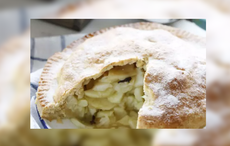July 14th is the French national holiday, la Fête du 14 Juillet.
It commemorates the storming of the Bastille prison in 1789, an open act of rebellion against the monarchy that is considered a turning point of the French Revolution. Two days after the storming of the Bastille, the king officially recognized the tricolor flag—the blue, white and red said to symbolize liberty, equality and brotherhood.
It also my son Jack’s 2nd birthday. (Note the spelling Jack as opposed to Jaques!)
So here’s the deal: during the reign of Louis XVI, France faced a major financial crisis, triggered by the cost of intervening in the American War of Independence, and exacerbated by an unequal system of taxation.
On May 5, 1789 the Estates-General of 1789 convened to deal with this issue, but was held back by archaic protocols and the conservatism of the Second Estate, consisting of the nobility and comprising 2% of France's population at the time.
On June 17, 1789, the Third Estate, with its representatives drawn from the middle class, or bourgeoisie, reconstituted themselves as the National Assembly, a body whose purpose was the creation of a French constitution. The king initially opposed this development, but was forced to acknowledge the authority of the assembly, which subsequently renamed itself the National Constituent Assembly on July 9.
The storming of the Bastille and the subsequent Declaration of the Rights of Man and of the Citizen was the third event of this opening stage of the revolution. The first had been the revolt of the nobility, refusing to aid King Louis XVI through the payment of taxes. The second had been the formation of the National Assembly and the Tennis Court Oath.
The middle class had formed the National Guard, sporting tricolor rosettes of blue, white and red, soon to become the symbol of the revolution.
The beginnings of French cuisine
The long history and sheer finesse of French cuisine has always given it the edge. Consider some of the country's delights – pungent cheeses, sublime wines, sweet buttery pastries, well-loved classic regional dishes.
In its early days royal influence was important. The French kings of the 17th century promoted their nation's cooking by insisting on weighty tables of soups, pheasant, partridge, game, vegetables, hams, pastries, fruits and preserves, all prepared by the finest chefs. One of the first French cookbooks, "Le Cuisinier Royal et Bourgeois," consisted of recipes from Louis XIV's kitchens and marked the beginning of haute cuisine.
The appeal of France's cuisine grew with the prestige of its culture and much of the Western world embraced it, although it took the USA longer than most to come round.
French food relied on the brilliance of its chefs and the quality of the ingredients that the land provided. The pioneers, still revered today, include Antonin Carême, who designed spectacular Roman-style architectural creations, and Brillat-Savarin, who wrote "La Physiologie du Gout" in 1825 and raised French cooking to an art and science.
Auguste Escoffier created dishes for the celebrities of his day and became known as "the chef of emperors and emperor of chefs". His showy, creamy dishes relied on the creation of a master sauce and dominated French plates until the 1970s when a lighter style, known as nouvelle cuisine, became the fashion.
Today, there is much debate over whether classic French haute cuisine is on its way out, as some of the best-known chefs in France have opened brasseries or bistros alongside their celebrated restaurants. The French are serving more down-to-earth, country-style cooking or "cuisine du terroir," drawing on regional dishes and ingredients. Whether this trend continues or not, there is no denying that the way we eat in America has been greatly influenced by our “friends” across the Atlantic.
So, Vive la France! Allez les bleus, but instead of storming a Parisian prison, storm into that kitchen and get cooking.
And what can be more French than a beautiful…
CREME BRULEE
INGREDIENTS
6 egg yolks
6 tablespoons white sugar, divided
½ teaspoon vanilla extract
2 ½ cups heavy cream
2 tablespoons brown sugar
METHOD
Preheat oven to 300 degrees F.
Beat egg yolks, 4 tablespoons sugar and vanilla in a mixing bowl until thick and creamy.
Pour cream into a saucepan and stir over low heat until it almost comes to boil. Remove the cream from heat immediately. Stir cream into the egg yolk mixture; beat until combined.
Pour cream mixture into the top of a double boiler. Stir over simmering water until mixture lightly coats the back of a spoon; approximately 3 minutes. Remove mixture from heat immediately and pour into a shallow heat-proof dish.
Bake in preheated oven for 30 minutes. Remove from oven and cool to room temperature. Refrigerate for 1 hour, or overnight.
Preheat oven to broil.
In a small bowl combine remaining 2 tablespoons white sugar and brown sugar. Sift this mixture evenly over custard. Place dish under broiler until sugar melts, about 2 minutes. Watch carefully so as not to burn.
Remove from heat and allow to cool. Refrigerate until custard is set again.
AND FINALLY… What is the difference between a slice of toast, and a Frenchmen?
You can make a soldier out of a piece of toast.




Comments